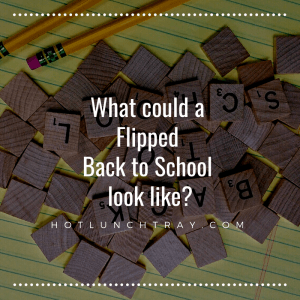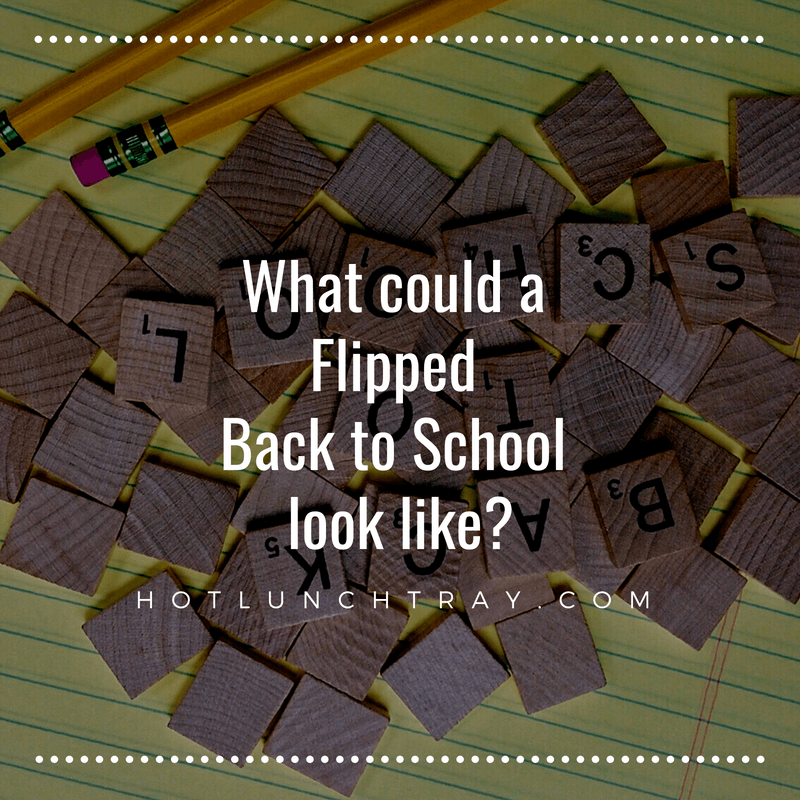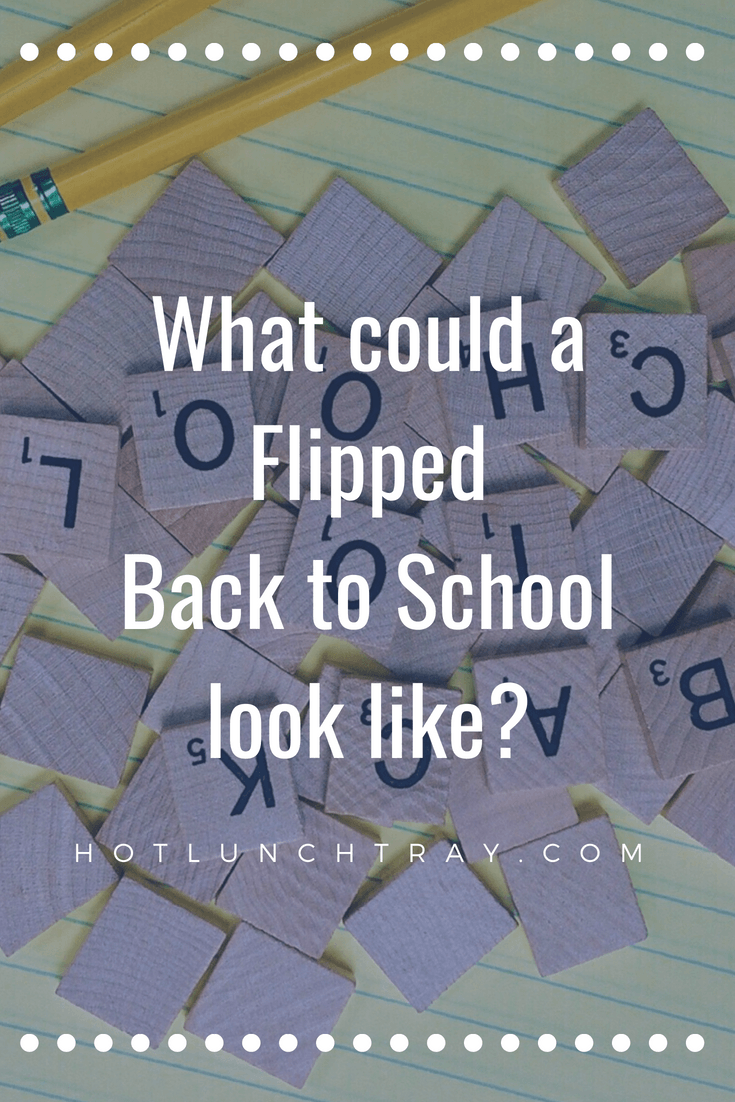Family engagement is tough.
A wide variety of factors can converge to create a gap between school and home. Sometimes work schedules, vacation schedules, and/or extracurricular events seem to conspire to keep families out of the school. When a school gets desperate, or smart, enough to be ready to try anything to bring families onto the same page – there is always technology. What could it look like if your Back to School was Flipped?
Could this technology bring families and schools closer together? Would you like to start trying with Back to School?
Every year I held a Back to School night was the first instance of the school year where I closed my door and was the “sage-on-the-stage” in that familiar face-to-face, synchronous way teachers know so well. I put in the same amount of effort each year. I made extra copies I would not use. I reached the same audience demographic. And if you were not present, your family missed some information, but I probably wasn’t exactly sure which information.
If I were able to create a video within an interactive platform for each of the classes I taught I would have offered more access, more information, and saved myself some work throughout the school year(s).
What my flipped Back to School night could have looked like though, that takes some imagination on my part. I hope it would ease the anxiety some families feel about sending their children on the first day of school. I hope that it would have allowed as many family members as wanted to the chance to listen to me passionately explain the classroom community students were entering, what my non-negotiable standards were, and how I would grow their students toward more responsibility for their own learning. I predict those who showed up had a piqued curiosity with several specific questions to ask me. I imagine myself circulating between groups of families getting to know each other and answering pointed questions.
Intentionality
Consider when you share your video. Share it right after class lists are posted.
Each class (elementary) or prep (secondary) requires its own video typically. You may find yourself in a situation you think is unique and requires something different, that’s fine. Just make sure that any parent, even that one parent, intuitively understands what they are watching. You want the video to be useful and something your parents (maybe even anxious students?) want to replay it over and over again.
Also, if you send out the video, do not give “the” speech again once everyone shows up. This sends the message that any flipped video you send home this year – as in that tough math lesson – isn’t worth watching, you will just give the lesson again in class. That’s not what you want parents/students to think. It may feel awkward at first, but just ask that they watched the video and then talk more deeply about their specific questions. Encourage parents to watch the video again if they have questions and reach out to you after that for further clarification.
In the end, you’ll have match ‘views’ on that video than parents who showed up!
Scalability & Repeatability
I have never been to a Back to School night where every parent showed up. That is just life, unfair, full of miscommunication life. But your video can portray the same enthusiasm, the same attention to detail, the same care whether it is played the first or 101st time! This can also be an awesome resource for those families who move in after the start of school.
Your first attempt may not be your final attempt. Allow yourself to not be perfect the first time. You can always improve on this next year after all. Sending the message you may not be perfect is pretty powerful too. Do not skip trying this in pursuit of perfection!
Unlike most of your teacher-created materials, this one can and will be watched – repeatedly!
Foreshadowing
Not only can this be used throughout the year and into the future, but it sets some expectations with parents.
Even if you are not flipping your entire class, this sets the stage for parents to expect some materials could be learned in the Individual Space and then deeply discussed in the Group space. Explaining teaching strategies is not as impactful as allowing our families to experience learning in this unique way. What better way to introduce families to a flipped environment than when they are the most interested in you?
So, when you’re pumped to try this you might want the “How To,” when you’re there you want to watch Darin Nakakihara walk you through the steps:







2018-07-26 at 12:15 pm
This post is quite timely. I am about to start back to teaching and actually considered flipped classroom. I co-taught in one a while ago and liked it but my apprehension is in the technicalities of how to actually film myself doing a lesson and then figuring out how to post it correctly . 🙂
wendy recently posted…Pickle Juice for Muscle Cramps-Bizarre or Beneficial?
2018-07-26 at 3:24 pm
I am not sure how I feel about a flipped classroom. I guess I am a traditional person and prefer traditionally methods. However, I want is best for student engagement and learning in the end. Back to school is on the horizon for us that is for sure!
2018-07-26 at 9:16 pm
This sounds like an interesting concept. I think there are a lot of kids who won’t do well with this. My daughter on the other hand, I think would love this.
2018-07-26 at 10:34 pm
I’m not sure which one I like, traditional or flipped. Whatever works for my daughter and since I have two, the lesser work for me, the better as well. True on that folks don’t all show up on back to school night though. Since I have 2 this year, I also don’t know how I’m gonna split myself to actually be in 2 classrooms to listen to it all.
2018-07-26 at 10:36 pm
I’m not sure how I feel about flipped classrooms either! I know times have really changed and as a parent I want nothing but the best for my kids. I just wonder how students will do with flipped classroom too , it’s so hard to change from the traditional way of learning with students . So much to consider!
2018-07-27 at 2:23 pm
Life is so busy these days. I think this is a great way to include the parents that can’t make it every time. Heck, I know I would’ve appreciated something like this when my kiddos were still in school.
2018-07-27 at 2:38 pm
I would appreciate it too Tami!
2018-08-13 at 11:52 am
Flipped classrooms are amazing. My sister in law has been doing flipped learning for 5 or 6 years in a 6th grade math classroom. She got teacher of the year last year. Now she is coaching other teachers. Thanks for sharing!
Jen;)
2018-08-13 at 6:37 pm
This sounds like such a great way to teach. I am going to do some more research on this in a bit. Thanks for sharing it.